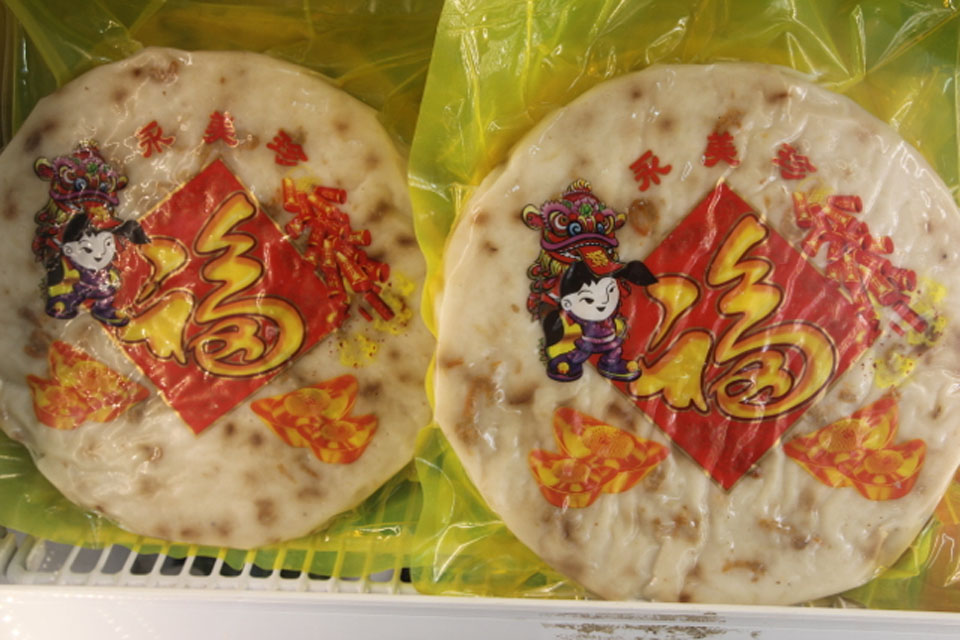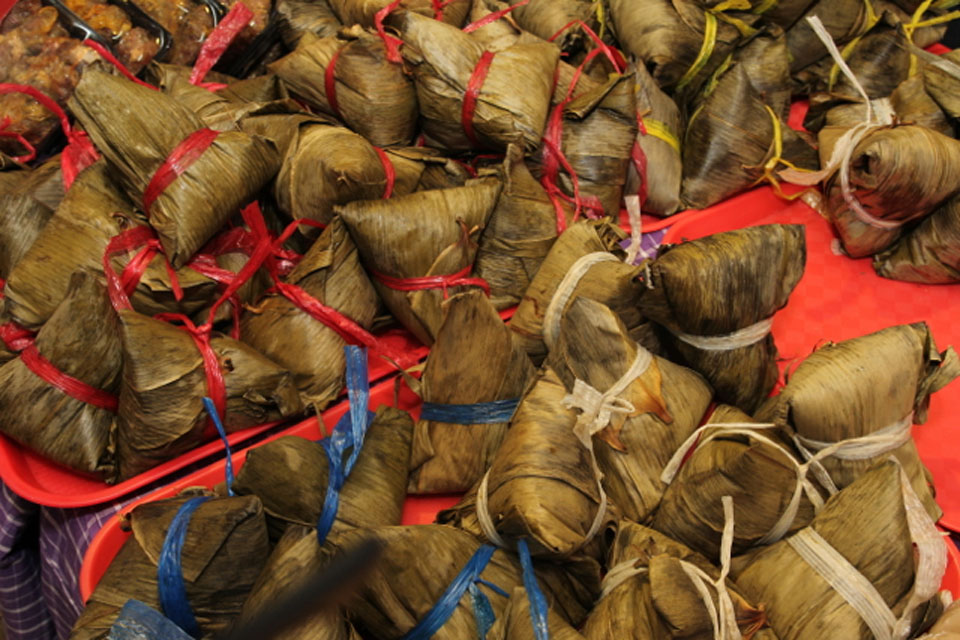Filtered by: Lifestyle
Lifestyle
Savory sweet treats to chow on for Chinese New Year
Text and Photos by STANLEY BALDWIN O. SEE
(Updated 2:24 p.m.) The packed roads leading to the world’s oldest Chinatown can only mean one thing: the Lunar New Year, or more popularly called the Chinese New Year, is about to be celebrated. From the main streets of Quintin Paredes and Ongpin to small alleys like Carjaval Street; at every meter of available space or so, there are vendors selling food, fruits and accessories promising to bring luck, wealth and prosperity for the coming year of the Green Wooden Sheep.
Here's a rundown of the holiday's most popular treats.
Here's a rundown of the holiday's most popular treats.

Radish cake is a less greasy Tikoy alternative.
Tikoy
Probably the most famous during the Chinese New Year, tikoy, made from sticky, glutinous rice is a symbol of a higher or better year to come. From the traditionally plain variety of tikoy, establishments nowadays are offering flavors such as ube, pandan, lite (artificial sweeteners are used instead of sugar), sweet corn, and butterscotch.
Whether you buy or receive one this Lunar New Year, the easiest way to prepare and cook this rice-based treat is to slice it, dip in beaten egg, then pan fry until golden brown. Another approach is to wrap pieces of tikoy in lumpia wrapper before being deep fried.
According to anthropologist Dr. Michael Tan in an interview on GMA's News To Go, "tikoy" is a Filipino approximation of the Chinese term for the sweet. The symbolism behind eating the sticky treat, he added, is that "Kung kakain ka ng malagkit, magiging 'malagkit' din ang relations mo sa pamilya, sa boyfriend-girlfriend, sa asawa."
According to anthropologist Dr. Michael Tan in an interview on GMA's News To Go, "tikoy" is a Filipino approximation of the Chinese term for the sweet. The symbolism behind eating the sticky treat, he added, is that "Kung kakain ka ng malagkit, magiging 'malagkit' din ang relations mo sa pamilya, sa boyfriend-girlfriend, sa asawa."
Radish Cake
Radish or turnip cake is an alternative to those who might not like the very oily taste and feel of tikoy. Made from shredded radish and rice flour, preparation and cooking can be similar to the pan fried tikoy or steamed for a healthier version.
Unlike the seasonality of the tikoy, radish cake is a popular breakfast or afternoon snack all year round.

The ma-chang is a complete meal in itself.
Ma-chang
Another glutinous rice-based concoction, this pyramid shaped treat is a meal in itself. Aside from rice, meat like chicken and Chinese sausage and nuts (peanuts, water chestnut) are mixed together, wrapped in lotus leaves and then boiled. Eaten as it is, one can also put some ketchup or hot sauce to spice things up.
Jiao-zi (Dumplings)
A northern China specialty, it does not matter if the filling is filled with only kuchay (garlic chives or Chinese leek) or kuchay with meat. What matters is that the shape of the dumpling is similar to a gold bar (money). Steamed or fried, "jiao-zi" is best eaten while hot together with garlic and onion-infused dipping sauce.

Jiao-zi, best eaten while hot, looks like a gold bar.
Pineapple/Ong lai
If tikoy is the most famous Chinese New Year snack, then the pineapple is its fruit counterpart. Ranging from mini to large sizes, the pineapple, or "ong lai" in Hokkien, symbolizes invitations for prosperity to come. While the regular and large types can be eaten as desserts, the mini varieties are no more than decorations hung from doors and walls inside the house.
Ponkan, Kiat-kiat, and any round fruits (suha, apple, watermelon, melon, cantaloupe)
The round fruits symbolizes wholeness and unity, while the ponkan/kiat-kiat or mandarin orange is traditionally attached to having abundance and good fortune.
With the government declaring February 19 as a non-working holiday due to the Chinese New Year, everybody is welcome to join the festivities and happenings for the next few days in Binondo. Eat, shop, and (lion/dragon) dance your way around Chinatown’s old streets. May the next year be prosperous to everyone.
Kung Hei Fat Choi! — VC/BM, GMA News
More Videos
Most Popular




